Table of Contents
Cabbage is leafy, cruciferous produce, belonging to the Brassica genus, and a cousin to kale and brussels sprouts. Due to its versatility, cabbage is an integral ingredient in many cuisines.
From creamy coleslaw, to tangy sauerkraut, and spiced kimchi, cabbage provides extra fresh crispness. When cooked, cabbage varieties soften and absorb both sauces and spices. You can also enjoy fresh cabbage by simply drizzling the leaves with olive oil, and lemon juice. Throw in some garlic and you have yourself an easy cabbage salad.
Cabbage is easy to grow as the plant adapts effectively to cold temperatures. Certain varieties offer milder flavor and sweeter notes, while others are peppery. Roundhead cabbages are common in most American grocery stores, but cabbage also comes in other shapes and sizes.
Let’s look at this versatile vegetable so you can choose the right variety for your kitchen or garden.
Common Cabbage Types
Before we present other cabbage classifications below, it’s important to learn the differences between heirloom and hybrid cabbage varieties.
Heirloom and Hybrid Cabbages
With no cross-breeding for at least 40 to 50 years, the heirloom cabbage varieties are true to seed, carrying similar traits as the parent plant. Through seed saving, heirloom seeds are passed down to the next generations within ethnic, family, or religious units or in certain geographic areas. Examples of heirloom cabbage varieties include Brunswick, Danish Ballhead, Green Express, Kogane, and Red Acre. However, heirloom cabbage varieties are prone to diseases — such as downy mildew and soft rot — and pest problems like aphids and cabbage root maggots.
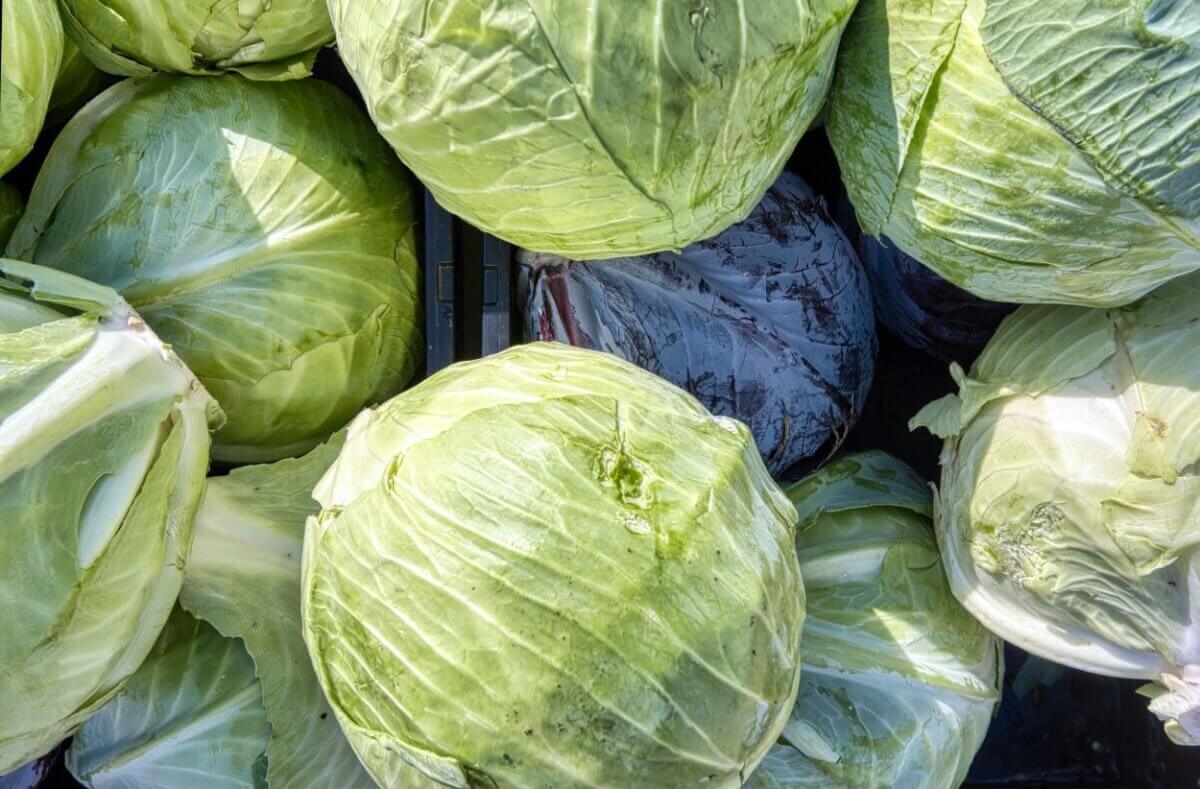
Agriculturists and breeders produced hybrid cabbage varieties to alleviate these problems. This genius innovation is possible by intentional and manual crossbreeding of two cabbage varieties. Ideal traits are put into the resulting hybrids, so they become more resistant to cold, disease, heat, or pests. No permanent seed line is produced.
Other Popular Cabbage Groupings
Learn more popular cabbage varieties grouped below by unique characteristics.
Types of Cabbage Colors
Green and red colors are the most common in cabbage varieties.
| Cabbage Colors | Common Examples (Where to Buy) |
|---|---|
| Green/Pale Green Cabbages | All Seasons (True Leaf Market) Brunswick (Eden Brothers, True Leaf Market, Rare Seeds, Burpee) Copenhagen Market (True Leaf Market, Eden Brothers, Seed Savers Exchange) Danish Ballhead (True Leaf Market) Early Jersey Wakefield (True Leaf Market, Rare Seeds, Burpee) Glory of Enkhuizen (True Leaf Market, Rare Seeds) Golden Acre (Eden Brothers, True Leaf Market, Rare Seeds) Greenboy (Territorial Seed Company) Green Express (True Leaf Market) Late Flat Dutch (Eden Brothers, True Leaf Market, Seed Savers Exchange, Rare Seeds) |
| Red/Purple Cabbages | Red Kalibos (Territorial Seed Company, Rare Seeds) Mammoth Red Rock (True Leaf Market) Omero (Territorial Seed Company) Primero (Territorial Seed Company) Red Acre (Eden Brothers, True Leaf Market) Red Express (Eden Brothers) Red Globe (Territorial Seed Company) Ruby Ball Improved (Territorial Seed Company) Scarlette (Territorial Seed Company) Tete Noire (Rare Seeds) |
Types of Cabbage Textures
While many enjoy the crunch found in most cabbage types, the Chinese or Napa cabbage can be eaten raw with ease due to its softer texture.
| Cabbage Textures | Common Examples (Where to Buy) |
|---|---|
| Firm Cabbages | Copenhagen Market (True Leaf Market, Eden Brothers, Seed Savers Exchange) Deadon (Territorial Seed Company) Golden Acre (Eden Brothers, True Leaf Market, Rare Seeds) RCC9 Red (True Leaf Market) Ruby Ball Improved (Territorial Seed Company) |
| Soft Cabbages | Blues Hybrid (True Leaf Market) Pak Choi Beijing Express Hybrid (True Leaf Market) Red Kalibos (Territorial Seed Company, Seed Savers Exchange) |
Types of Cabbage Shapes
Most cabbages have either a conehead, oval, or round shape. The loose-headed shape is more common in Chinese cabbage varieties.
Types of Cabbage Flavors
The addition of cabbage will boost a dish’s flavor complexity.
| Cabbage Flavors | Common Examples (Where to Buy) |
|---|---|
| Mild Cabbages | All Seasons (True Leaf Market) Charleston Wakefield (Eden Brothers, Burpee) Danish Ballhead (True Leaf Market) Ruby Ball Improved (Territorial Seed Company) Savoy (Eden Brothers) Scarlette (Territorial Seed Company) Tiara (Territorial Seed Company) |
| Peppery Cabbages | Farao (Territorial Seed Company) Omero (Territorial Seed Company) Pak Choi White Stem (Eden Brothers, True Leaf Market) |
| Sweet Cabbages | Copenhagen Market (True Leaf Market, Eden Brothers, Seed Savers Exchange) Early Jersey Wakefield (True Leaf Market, Rare Seeds, Burpee) Filderkraut (Territorial Seed Company, Rare Seeds) Golden Acre (Eden Brothers, True Leaf Market, Rare Seeds) Mini Napa #2 Hybrid (True Leaf Market) RCC3 Red (True Leaf Market) Red Acre (Eden Brothers, True Leaf Market) |
Types of Geographic Origins
There’s no clear answer to where wild cabbage originated. Some would argue that it has roots in the Mediterranean. Through time, cabbage spread worldwide through expeditions, and trade between various civilizations including the Chinese, Greeks, and British.
| Geographic Origin | Common Examples (Where to Buy) |
|---|---|
| European/Mediterranean Cabbages | Brunswick (Eden Brothers, True Leaf Market, Rare Seeds, Burpee) Copenhagen Market (True Leaf Market, Eden Brothers, Seed Savers Exchange) Cour Di Bue (Rare Seeds) Filderkraut (Territorial Seed Company, Rare Seeds) Golden Acre (Eden Brothers, True Leaf Market, Rare Seeds) |
| North American Cabbages | All Seasons (True Leaf Market) Charleston Wakefield (Eden Brothers, Burpee) Early Jersey Wakefield (True Leaf Market, Rare Seeds, Burpee) Katarina (Territorial Seed Company) Ruby Ball Improved (Territorial Seed Company) |
| Asian Cabbages | Aichi (True Leaf Market) Kyoto #3 (True Leaf Market) Michihili (Eden Brothers) Red Acre (Eden Brothers, True Leaf Market) Sapporo Giant #4 (Rare Seeds) |
Types of Culinary Uses
Cruciferous vegetables like cabbage — with its many kitchen uses — can be enjoyed both cooked and raw.
| Culinary Uses | Common Examples (Where to Buy) |
|---|---|
| Cabbages for Slaws | Capture (Territorial Seed Company) Charmant (Territorial Seed Company) Glory of Enkhuizen (True Leaf Market, Rare Seeds) Omero (Territorial Seed Company) Red Kalibos (Territorial Seed Company, Rare Seeds) |
| Cabbages for Sautéing/Stir-fry | Farao (Territorial Seed Company) Golden Acre (Eden Brothers, True Leaf Market, Rare Seeds) Kogane (True Leaf Market) Michihili (Eden Brothers) QD-2 Express (True Leaf Market) |
| Cabbages for Stews/Soups | Nabi Queen Dwarf Hybrid (True Leaf Market) Pak Choi White Stem (Eden Brothers, True Leaf Market) Rosette Tatsoi (True Leaf Market) Savoy (Eden Brothers) Savoy Tatsoi (True Leaf Market) |
Types of Disease Resistance
Heirloom cabbage varieties tend to be less resistant to diseases and pests. Certain hybrid cabbages have been improved to withstand these issues so you get a better harvest.
| Disease Resistance | Common Examples (Where to Buy) |
|---|---|
| Disease Resistant Cabbages | All Seasons (True Leaf Market) Deadon (Territorial Seed Company) Katarina (Territorial Seed Company) Wa Wa Tsai (Territorial Seed Company) |
| Susceptible Heirloom Cabbages | Copenhagen Market (True Leaf Market, Eden Brothers, Seed Savers Exchange) Danish Ballhead (True Leaf Market) Late Flat Dutch (Eden Brothers, True Leaf Market, Seed Savers Exchange, Rare Seeds) Mammoth Red Rock (True Leaf Market) Red Acre (Eden Brothers, True Leaf Market) |
Types of Preferred Growing Conditions
A leafy green like cabbage can be planted in your home garden. Different varieties have their own distinct needs and preferred growing conditions.
| Preferred Growing Conditions | Common Examples (Where to Buy) |
|---|---|
| Greenhouse Cabbages | Copenhagen Market (True Leaf Market, Eden Brothers, Seed Savers Exchange) Late Flat Dutch (Eden Brothers, True Leaf Market, Seed Savers Exchange, Rare Seeds) Mammoth Red Rock (True Leaf Market) Red Acre (Eden Brothers, True Leaf Market) Red Globe (Territorial Seed Company) |
| Field Cabbages | Charleston Wakefield (Eden Brothers, Burpee) Danish Ballhead (True Leaf Market) Early Jersey Wakefield (True Leaf Market, Rare Seeds, Burpee) Golden Acre (Eden Brothers, True Leaf Market, Rare Seeds) Omero (Territorial Seed Company) |
| Container Cabbages | Brunswick (Eden Brothers, True Leaf Market, Rare Seeds, Burpee) Katarina (Territorial Seed Company) Pak Choi White Stem (Eden Brothers, True Leaf Market) Red Express (Eden Brothers) Savoy (Eden Brothers) |
Popular Varieties of Savoy Cabbages
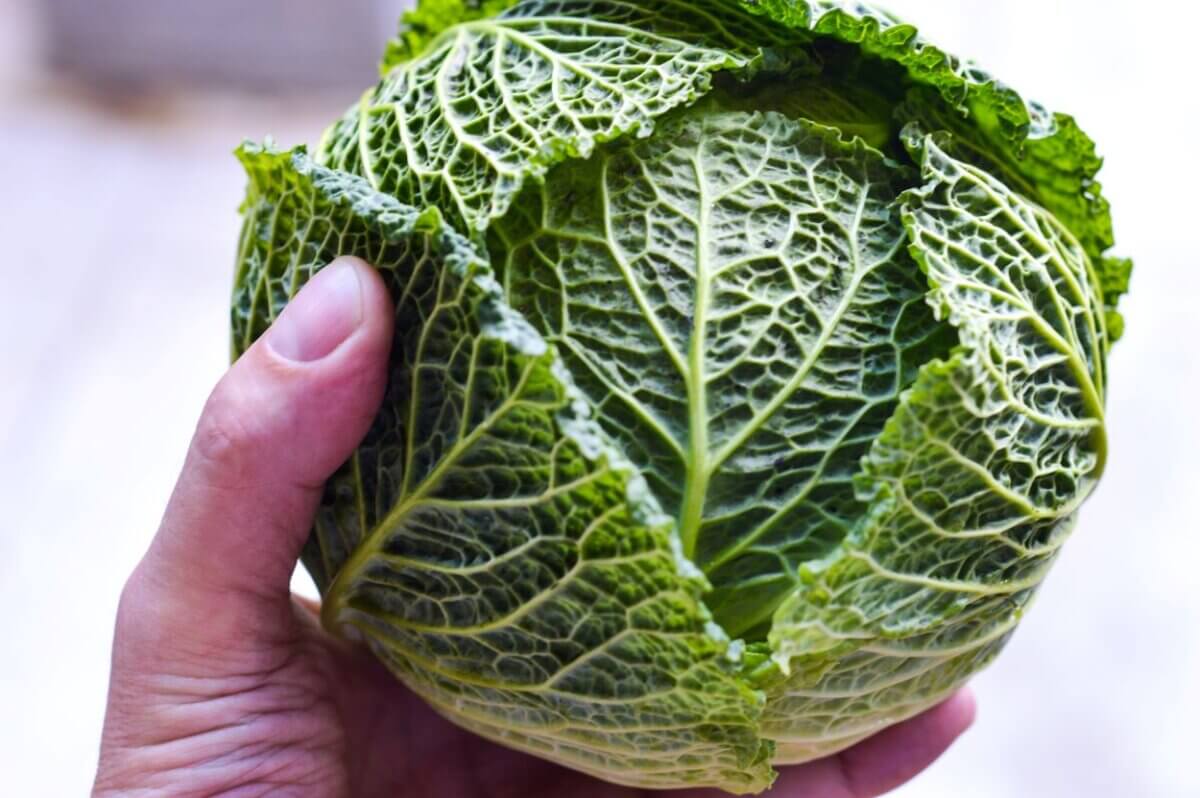
Savoy cabbages have distinctly crumpled leaves, bundled in a tight head. You can have them in different colors — from red to green varieties. The name “Savoy” is derived from a region in the Western Alps.
| Variety | Description | Lifecycle | Days to Maturity | Where to Buy |
|---|---|---|---|---|
| Savoy | Originating from Italy, the Savoy cabbage is a unique variety with ribbed, dark green leaves. When cooked, Savoy has a more subtle smell than other varieties. | Annual | 90 to 100 days | Eden Brothers |
| Savoy Tatsoi | The Savoy Tatsoi is a spinach-like variety that can withstand heat and cold. It is ideal for early harvesting — 10 to 15 days as microgreens and 20 to 30 days as baby leaves. It has a slightly peppery flavor. | Annual | 45 days | True Leaf Market |
| Purple Savoy | Suitable for storing, the cold tolerant Purple Savoy has a sweet flavor that can be enjoyed in salads. | Annual | 61 to 65 days | True Leaf Market |
| Brunswick | The Brunswick cabbage is a German variety, first introduced to the U.S. market in 1924. Traditionally, this variety is used for sauerkraut. | Annual | 70 to 100 days | Eden Brothers, True Leaf Market, Rare Seeds, Burpee |
| Alcosa | Measuring anywhere between 5 to 6 inches, the Alcosa’s small plant structure makes them a great choice for spaced plantings. They are cold-tolerant too! | Annual | 62 to 65 days | Territorial Seed Company |
Popular Varieties of Spring Green or Loose Head Cabbages
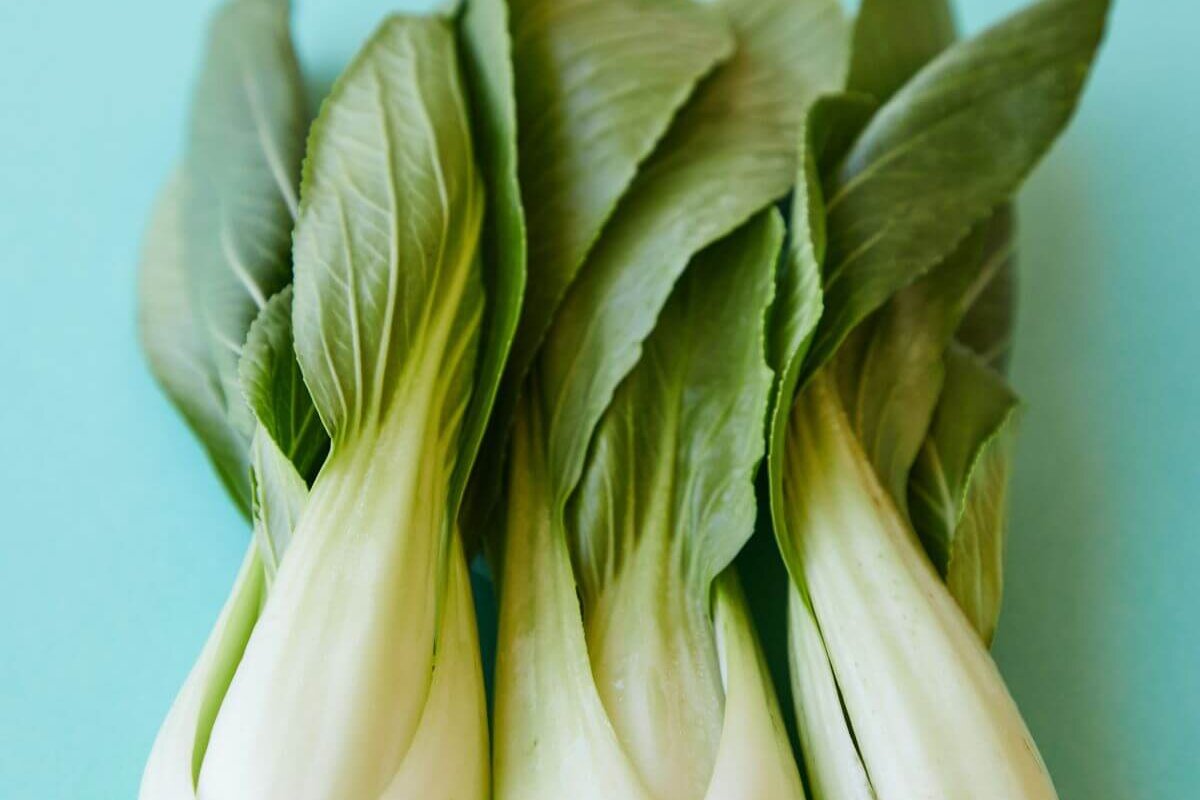
Spring green cabbage is similar to kale, growing leaves that do not form a head that typical cabbage types have. Instead, the spring green varieties are loose-headed, falling under the cultivar of Brassica oleracea. Most of the popular loose head varieties fall under the bok choy or pak choi subspecies found in Chinese cabbages. They can be planted in patios due to their compact size.
| Variety | Description | Lifecycle | Days to Maturity | Where to Buy |
|---|---|---|---|---|
| Canton White | The Canton White is one of the most compact bok choy out there, making it suitable for container planting. The leaves and stems give off a mustard-like flavor with a spicy kick. | Annual/Biennial | 50 to 55 days | True Leaf Market |
| Bopak | This variety is the first bok/pak choi variety to win an All-America Selection award. It is an ideal choice for home gardeners with minimal outdoor space due to its small size. The plant can be approximately 8 inches tall and 4 inches wide. | Annual | 40 to 47 days | Territorial Seed Company |
| Joi Choi | With thicker white stems, the Joi Choi variety can grow up to 11 inches tall. | Annual | 30 to 45 days | Territorial Seed Company, True Leaf Market |
| Ching-Chiang | The Ching-Chiang variety was developed to resist the cold, heat, and moisture. It can be planted during early spring, late summer, and fall. | Annual | 40 to 45 days | Territorial Seed Company |
| Taisai | Growing as tall as 18 inches, the Taisai has a shape similar to a spoon. Its white petioles are thick and long. | Annual | 50 to 55 days | True Leaf Market |
Popular Varieties of Wombok or Chinese Cabbages
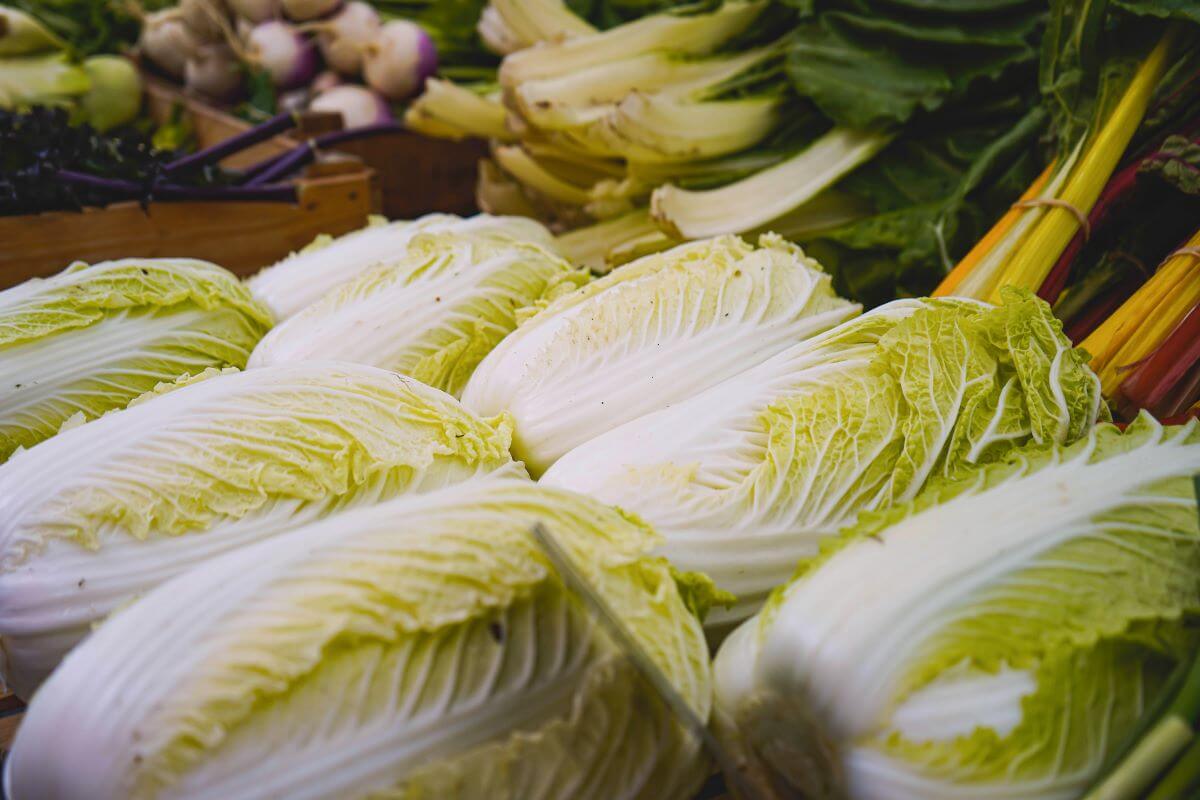
Belonging to the same family as cabbage, the Wombok or Chinese varieties can be distinguished into two groups — the pekinensis subspecies (napa cabbages), and chinensis subspecies (bok choy).
| Variety | Description | Lifecycle | Days to Maturity | Where to Buy |
|---|---|---|---|---|
| Chun Yeon Gold | Consider Chun Yeon Gold for home gardening due to its resistance to downy mildew and soft rot. It can be used for kimchi as this variety tends to have less moisture content. The Chun Yeon Gold has green to light green outer leaves and a bright yellow center. | Annual | 60 to 70 days | True Leaf Market |
| Pak Choi White Stem | Also known as Chinese White cabbage, the Pak Choi White Stem is used in many Asian cuisines. It has a mild taste with peppery notes that work well in soups, stews, and stir-fry. | Annual | 33 to 35 days | Eden Brothers, True Leaf Market |
| Spring Crisp | The Spring Crisp is a hybrid variety resistant to bolting during warm seasons. | Annual | 63 to 65 days | True Leaf Market |
| Scarlette | A great alternative to radicchio (minus the bitter flavor), this variety can grow as long as 13 inches and 20 inches wide. | Annual | 70 to 75 days | Territorial Seed Company |
| Kyoto No. 3 | The Kyoto No. 3 is a Japanese cabbage variety, weighing anywhere between 6 and 7 pounds after maturity. The pale green leaves from this | Annual | 80 days | True Leaf Market |
Popular Varieties of Red Cabbages
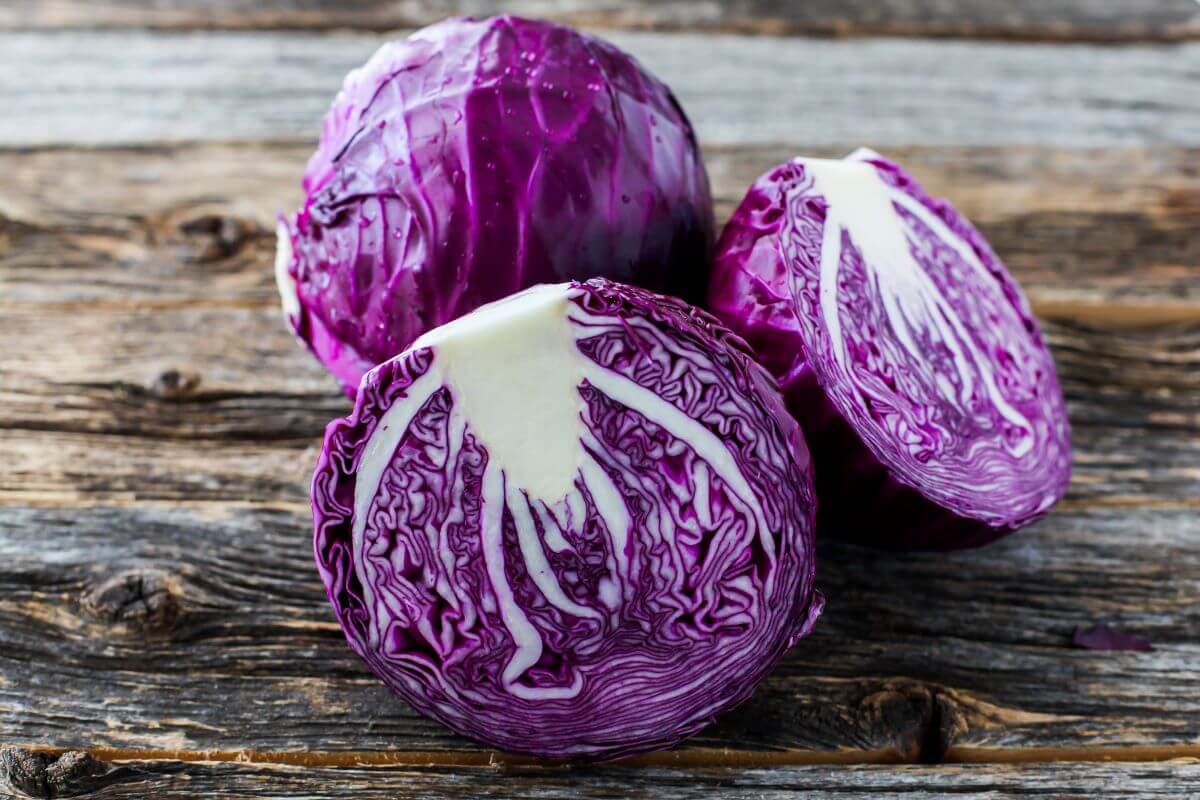
Red or purple cabbage heads have their color due to the anthocyanins content. Intake of anthocyanin-rich food like red cabbages is linked to lowered risk of cardiovascular disease. In addition, this type has a high amount of vitamin C, boosting your immune system. A half-cup serving of red cabbage can cover 45% of your daily need for this nutrient.
| Variety | Description | Lifecycle | Days to Maturity | Where to Buy |
|---|---|---|---|---|
| Red Acre | The Red Acre cabbage is a great option for coleslaw recipes due to its light and sweet flavor. You can consume it as raw cabbage to enjoy its crisp texture. | Annual | 70 to 100 days | Eden Brothers, True Leaf Market |
| Mammoth Red Rock | This hardy produce can grow in climate zones of 1 thru 10. The crisp leaves are suitable for salads and slaws. | Annual | 85 to 90 days | True Leaf Market |
| Red Express | This variety was primarily bred to resist the Northern climate, but grows well in other regions in the United States. | Annual | 60 to 75 days | Eden Brothers |
| Red Kalibos | The Red Kalibos is a European variety with a unique elongated, conical shape. They come in red/purple color and taste mildly sweet. | Annual | 74 to 85 days | Territorial Seed Company, Rare Seeds |
Other Varieties of Cabbage
Some cabbage varieties are more suitable for early harvesting.
Popular Varieties of Baby and Microgreen Cabbages
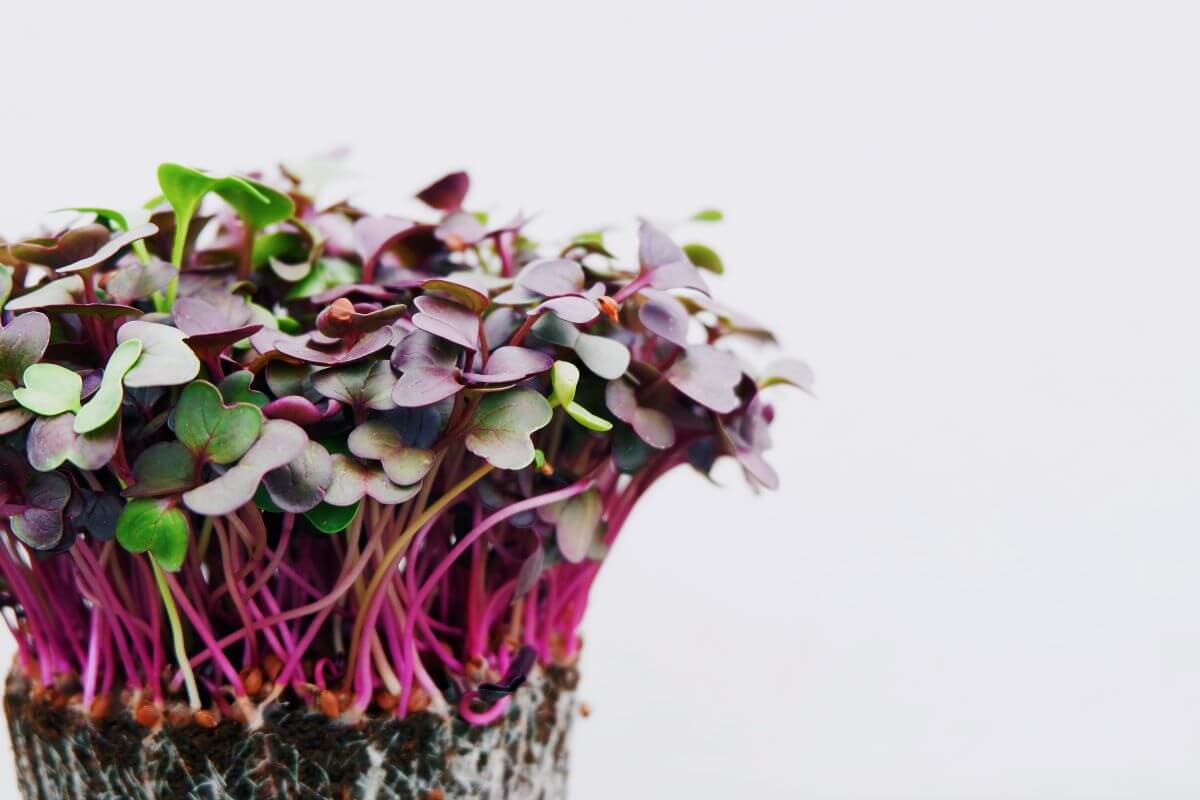
Adding baby or microgreen cabbage to your diet is an excellent way to enjoy their nutritional value. They can be harvested before the development of a cabbage head.
| Variety | Description | Days to Germination | Days to Maturity | Where to Buy |
|---|---|---|---|---|
| Variety | Description | Days to Germination | Days to Maturity | Where to Buy |
| Red Cabbage Microgreens | Boost the vitamin C content of your salad by throwing in a handful of red cabbage microgreens. They sprout with white stems that dramatically turn into purple or red. | 1 to 2 days | 8 to 12 days | True Leaf Market |
| Red Acre Microgreens | If you have high cholesterol, try adding Red Acre microgreens to your meals. Research suggests that it can lower bad cholesterol. | 2 to 3 days | 6 to 14 days | True Leaf Market |
| Mammoth Red Rock Microgreens | Another red cabbage microgreen, the mammoth Red Rock can be harvested early. | 3 to 4 days | 8 to 12 days | True Leaf Market |
FAQ About Types of Cabbage
Which cabbage type is ideal for rolls and wraps?
Any of the Savoy or Chinese varieties are suitable for cabbage rolls and wraps. Their leaves tend to be softer and easier to maneuver compared to different varieties of cabbage. You can sauté them with your choice of sauces and spices as the leaves absorb these ingredients well.
Which cabbage type is commonly used for kimchi?
The elongated Chinese or Napa cabbage is traditionally used for kimchi. Their leaves tend to be tender, and they mellow down during the fermentation process, but you can use different types of cabbage when producing kimchi at home.


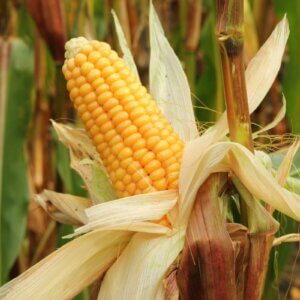



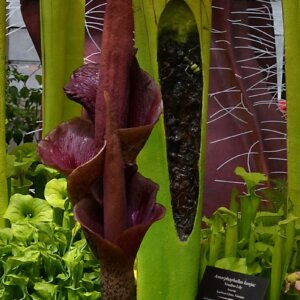














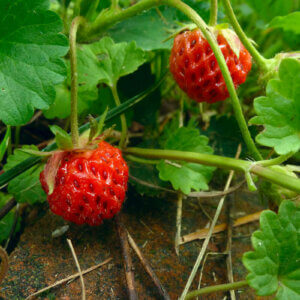
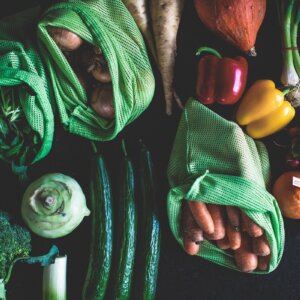

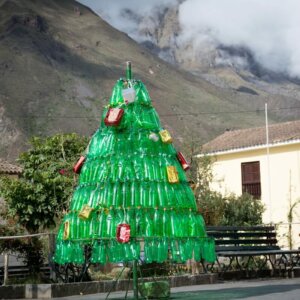

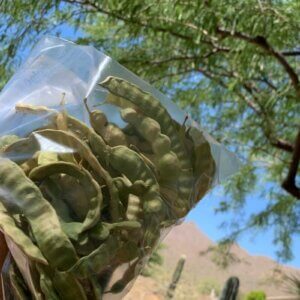
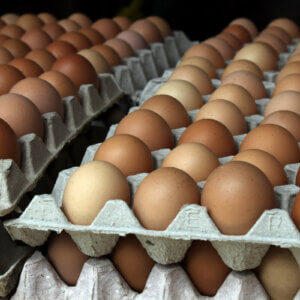
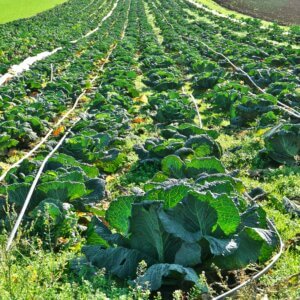


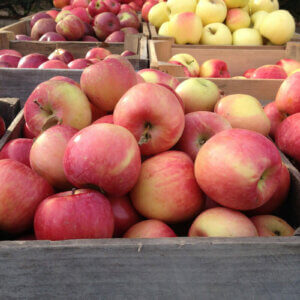
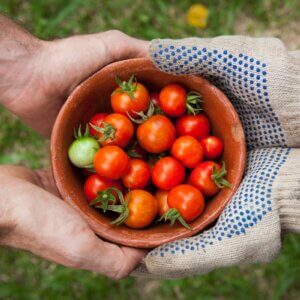
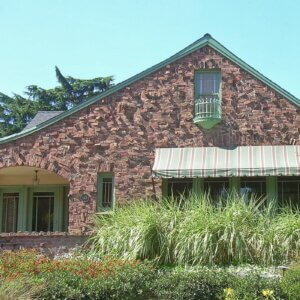

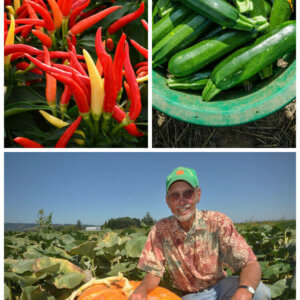

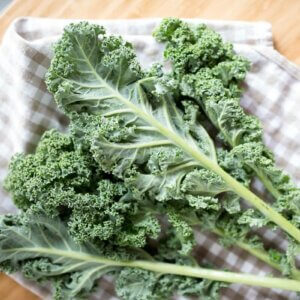



Leave a Reply